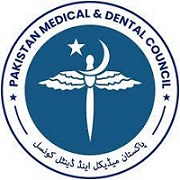FREQUENCY OF IDIOPATHIC SHORT STATURE AT PEDIATRIC ENDOCRINE CLINIC IN A TERTIARY CARE HOSPITAL AT LAHORE
Abstract
Background: Short stature of children is a very common concern for the parents in developing countries. Short stature is defined as “Height which is less than 2 standard deviations (2SD) or less than 3rd percentile of the mean height of age and gender”. Short stature is not a disease, it is actually a manifestation of some underlying problem. Idiopathic short stature (ISS) must exclude all the explained causes of growth failure including nutritional, systemic illnesses, endocrine, syndromic, skeletal dysplasia, Psychosocial, constitutional and familial. The idea of this study is to know the burden of ISS in our population. And in future we expect to discover several genetic causes of short stature in these patients to explain the phenotype of what we currently classify as idiopathic short stature.
Objective: To determine the frequency of idiopathic short stature in children presenting at pediatric endocrine outdoor for evaluation of short stature.
Methods: This retrospective cross-sectional study was conducted on 188 patients registered in pediatric endocrine OPD from January 2019 to December 2020 in the department of pediatrics, Fatima memorial hospital, Lahore. Patients were included in the study after obtaining approval from the Institutional Review Board and ethical committee. All the patients between 2-18 years including both genders, having stature less than 3rd percentile for age and sex were enrolled in the study. Their physical, biochemical, hormonal parameters, radiological bone age and Karyotype where indicated was recorded in a pre-designed pro-forma. The relevant data was analysed in SPSS version 25. The frequency and percentages were calculated for qualitative variables such as gender and the diagnosis of short stature.
Results: Among the total of 188 children with short stature, who were below 3rd centile for their height on 2000 CDC growth charts, 100 (53.2%) were males and 88 (46.8%) were female with male to female ratio of 1.13:1. Idiopathic short stature was found in 10 (5.3%) patients. Among these 10 patients with idiopathic short stature, 2(20%) were males and 8(80%) were female. Moreover, in idiopathic short stature, 5(50%) cases were pre-pubertal, 3(30%) cases were peri-pubertal and 2(20%) cases were post pubertal.
Conclusion: Idiopathic short stature is a diagnosis of exclusion. It is more common in females and in the pre-pubertal age group. This group of patients among the short stature needs more focus for extensive studies to identify its genetic factors and moreover, to evaluate the response of growth hormone to manage it in time before achieving the puberty.





